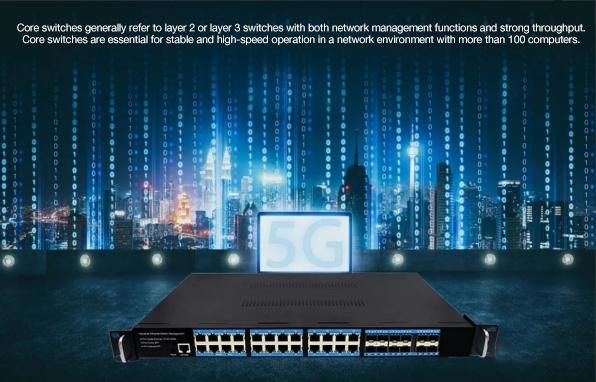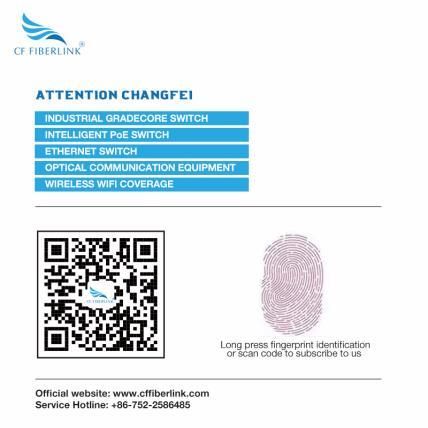
Firstly, let's focus on:
Core switches are not a type of switch,
It is a switch placed on the core layer (network backbone).
1. What is a core switch
Generally, large enterprise networks and internet cafes need to purchase core switches to achieve strong network expansion capabilities and protect existing investments. Only when the number of computers reaches a certain level can core switches be used, while there is basically no need for core switches below 50, and routing is sufficient. The so-called core switch refers to the network architecture. If it is a small local area network with several computers, an 8-port small switch can be called a core switch. Core switches generally refer to Layer 2 or Layer 3 switches that have both network management functions and strong throughput. In a network environment with more than 100 computers, a core switch is essential for stable and high-speed operation.
2. Differences between core switches and regular
switches: The number of ports in regular switches is generally 24-48, and the majority of network ports are gigabit Ethernet or gigabit Ethernet ports. The main function is to access user data or gather switch data from some access layers. This type of switch can be configured with Vlan simple routing protocol and some simple SNMP functions at most, and the backplane bandwidth is relatively small. There are a large number of core switch ports, which are usually modular and can be freely paired with optical ports and gigabit Ethernet ports. Generally, core switches are three-layer switches that can set various advanced network protocols such as routing protocols/ACL/QoS/load balancing. The most important point is that the backplane bandwidth of core switches is much higher than that of regular switches, and they typically have separate engine modules and are primary and backup. The difference between users connecting or accessing the network: The part of the network that directly faces users connecting or accessing the network is usually referred to as the access layer, and the part between the access layer and the core layer is referred to as the distribution layer or aggregation layer. The purpose of the access layer is to allow end users to connect to the network, so the access layer switch has the characteristics of low cost and high port density. A convergence layer switch is a convergence point for multiple access layer switches, which must be able to handle all traffic from access layer devices and provide uplink to the core layer. Therefore, aggregation layer switches have higher performance, fewer interfaces, and higher switching rates. The backbone of the network is called the core layer, whose main purpose is to provide an optimized and reliable backbone transmission structure through high-speed forwarding communication. Therefore, the core layer switch application has higher reliability, performance, and throughput.
Compared to ordinary switch core switches, they need to have features such as large cache, high capacity, virtualization, scalability, and module redundancy technology. Currently, the switch market is mixed, and product quality is uneven. Users can pay attention to CF FIBERLINK in product selection, and there is definitely one suitable core switch for you!

Post time: Jun-07-2023

